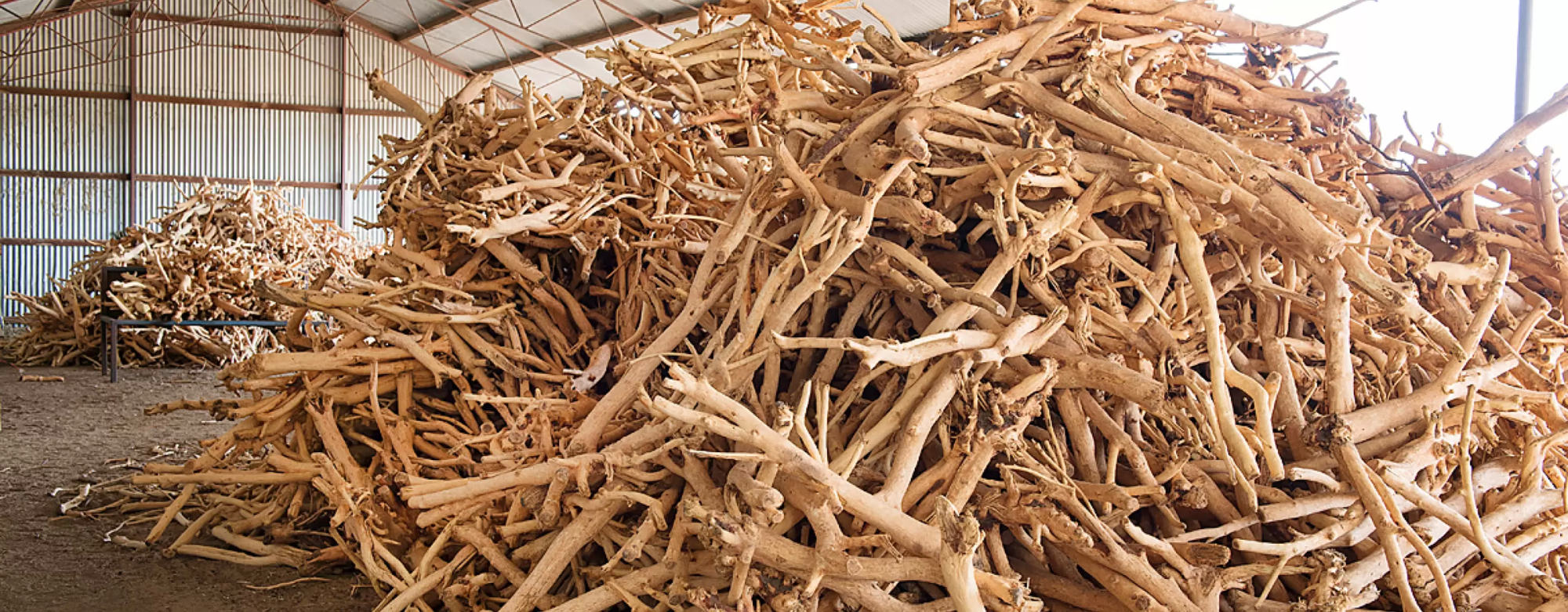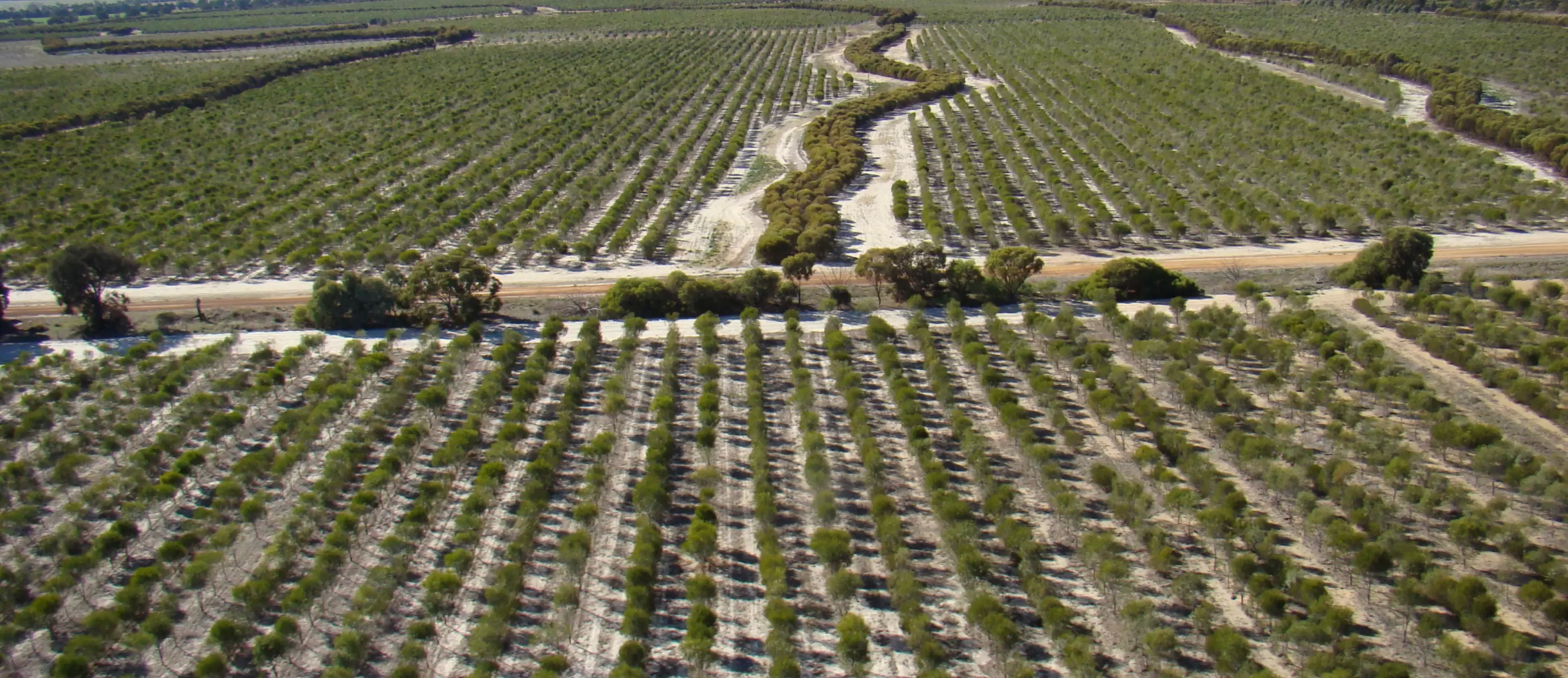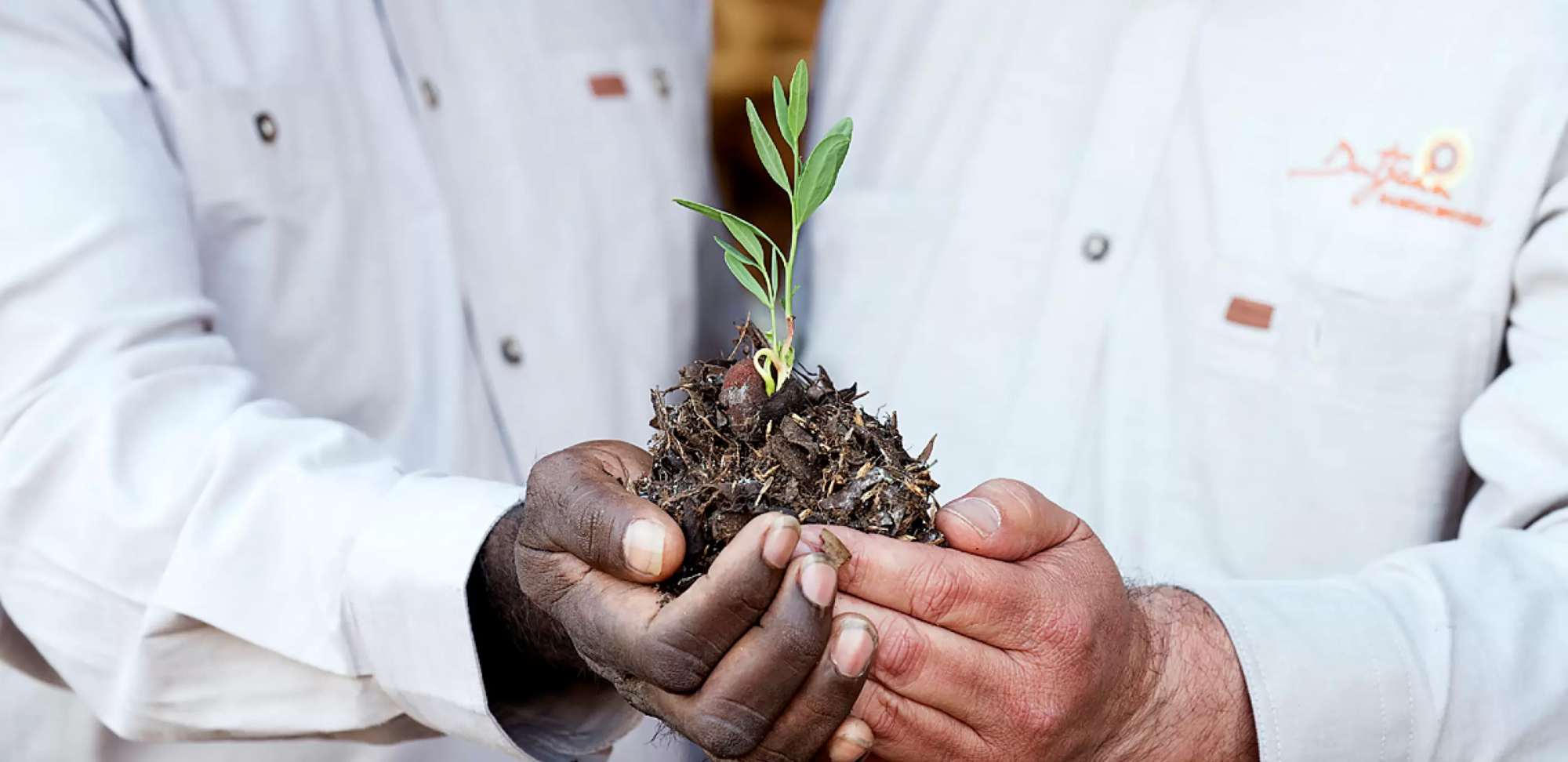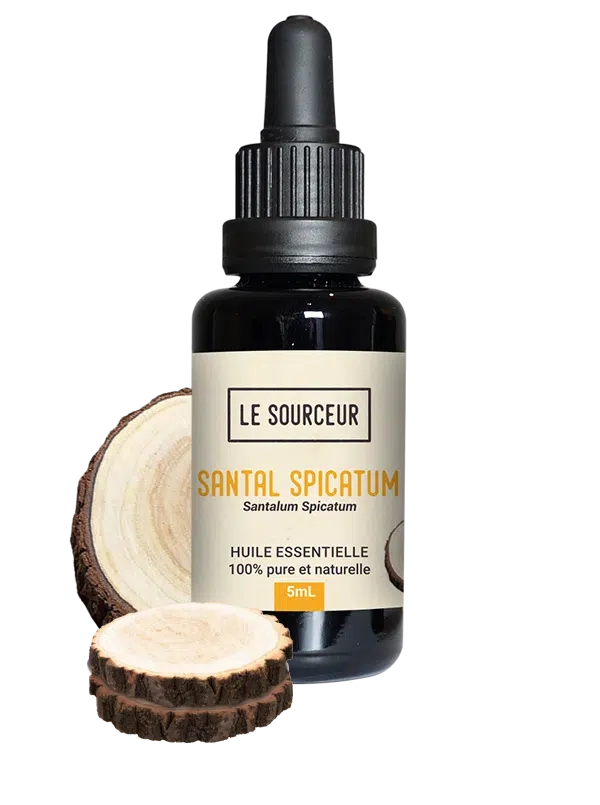Livraison offerte dès 79€ d'achat !
Nouveautés : Les Infusions, les Ultrasons et les Upcycling !
Livraison offerte dès 79€ d'achat !
Nouveautés : Les Infusions, les Ultrasons et les Upcycling !
Santal Spicatum is an evergreen tree of the Santalaceae family that grows naturally in the southern half of Western Australia.
Once found mainly in the Wheatbelt region, it is now cultivated in the Midwest and Goldfields regions (notably in the small mining town of Kalgoorlie, where our Santal comes from).
These are strictly regulated and protected by the Department of Conservation and Land Management (CALM) under the provisions of the Sandalwood Act.

A small shrub no more than 4 meters tall, Santal Spicatum is a hemiparasite.
This means that, while it contains chlorophyll enabling it to photosynthesize on its own, its roots are not sufficient to pump the water and nutrients it needs from the soil.
During the first 10 years of growth, it feeds and hydrates itself directly from the roots of neighboring trees, such as Acacia or Eucalyptus.
According to Australian archives, the first distillations of Sandalwood Spicatum are estimated to have taken place in the mid-19th century.

The preferred site for growing sandalwood is clay soil.
However, sandalwood also grows on gravel, yellow sand and red sand.
The site must be able to retain water, yet be well drained.
Saline, waterlogged or very clayey soils are not suitable.
Growing sandalwood is a long and meticulous art.
First, farmers dig cultivation beds spaced 4m apart and 50cm deep.
Then, the seeds of the host trees (eucalyptus, acacia) are planted on each row with a spacing of 3 meters between each seed.
Sandalwood seeds are then planted 50cm from each shrub, after 1 to 2 years (until each host tree is at least 1m tall).
Sandalwood seeds then take between 4 and 8 weeks to germinate, and it takes a minimum of 5 years and an average of 10 years to grow sandalwood; it is generally grown when its trunk exceeds 125mm in diameter, or even 150mm at ground level.
By the age of 5, sandalwood spicatum’s parasite requirements are far too great for a single host tree.
A quality crop will therefore require a minimum ratio of one sandalwood tree for every 2 hosts.

In Aboriginal culture, it is said that sandalwood has been used to perfume the air for over 30,000 years.
This makes it mankind’s first perfume.
The wood was heated to release its aromas and implore the gods.
Sandalwood has always been perceived as a material that brings men and gods together.
It was therefore regularly used for cremations; for the record, Gandhi was cremated with a ton of sandalwood (album this time, but it shows the “sacredness” around the whole species).
Even today, in the contemporary use of Sandalwood Spicatum, there is a strong attachment to the sacred.
Rich in terpenes, its essential oil is renowned for its positivizing, soothing and calming properties.
It promotes positivity.
It is therefore widely used in aromatherapy or olfactotherapy to treat a variety of ailments, from the highly stressed to the depressed.
In perfumery, sandalwood spicatum is reputed to be an excellent fixative and is widely used as a top note to enrich creations.

If Sandalwood has always had something mystical about it, it guided us to our profession, at a time when our chief sourcer had nothing to do with the world of sourcing.
These twenty years of work are the result of chance, sprinkled with a bit of madness, we grant you.
Here’s the story.
In the summer of 1999, backpack slung over our shoulders, we took a road trip to Western Australia.
On this occasion, we stopped off at the home of an old friend named Steve, on his farm in Albany, a small coastal town 400 km southeast of Perth.
Over a meal, he told us about a project he was developing on the initiative of an Aboriginal community from the Kalgoorlie region, the Dutjahn.
Ever since the British colonized Australia in the late 18th century, the law of terra nullius has been invoked to violate Aboriginal land rights.
These expropriations are constantly motivated by money, as the entire country abounds in particularly lucrative resources.
Recently, many actors have been fighting for aboriginal rights, and some communities have won their first battle by regaining ownership of their land.
Such is the case of the Dutjahn.
But in Western Australia in 1999, the natives still had no right to exploit the resources that abounded in the soil and subsoil.
The Dutjahn people were thus denied the right to cultivate sandalwood on their own land, no matter how skilled they were.

The State of Western Australia wouldn’t budge, so they needed an Australian guarantor to get their project off the ground.
They naturally turned to Steve, a well-known entrepreneur with a strong commitment to the Aboriginal cause.
He quickly agreed.
After a long struggle, they even managed to split the shares equally between Australians and Aborigines, something that was inconceivable just a few years ago.
At the time, in a country riddled with clichés, few people believed in this initiative.
Sales were taking off timidly on Australian soil, while they were struggling to find an intermediary willing to sell their timber on the European market.
Without a second thought, we offered.
At first Steve thought we were joking, but in the face of our insistence, he finally decided he had nothing to lose.
The funniest part of the story is that, at the time, we had no contacts whatsoever in the industry…


Barrett, D.R (1987).
Initial observations on flowering and fruiting in Santal spicatum (R.BR.)
the Western Australian sandalwood.
Mulga Research Center Journal 9: 33-37
Brand, J.E., Ryan, P.C. and Williams, M.R. (1999) Establishement of sandalwood (Santalum Spicatum)
in south-western Australia: the Northampton pilot trial.
Australian Forestry 62 (1): 33-37


 informations
informations  mon compte
mon compte  contact
contact Copyright © 2024 Le Sourceur. Tous droits réservés / Développement : Mrlsagency
 matieres sourcees
matieres sourcees  rejoindre la tribu
rejoindre la tribu